Arthur Candalot
Soft Gripping System for Space Exploration Legged Robots
Nov 08, 2024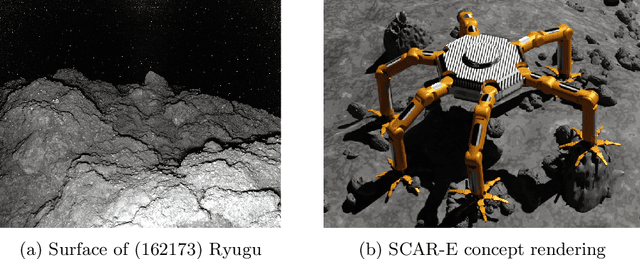
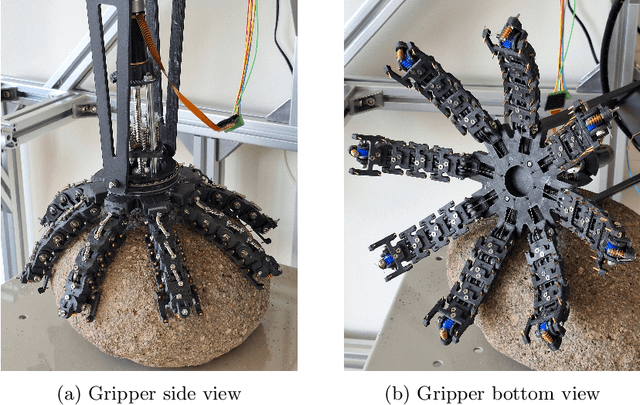
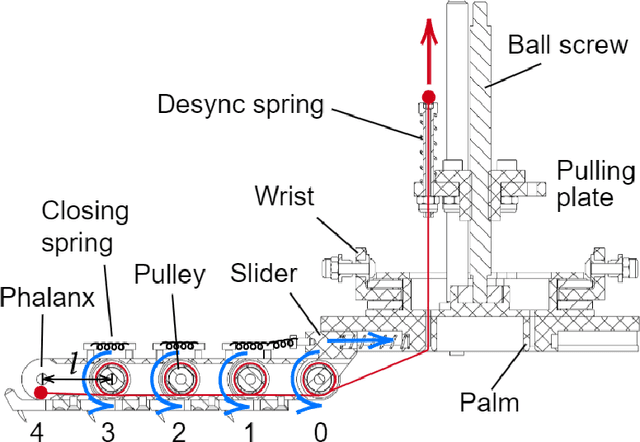
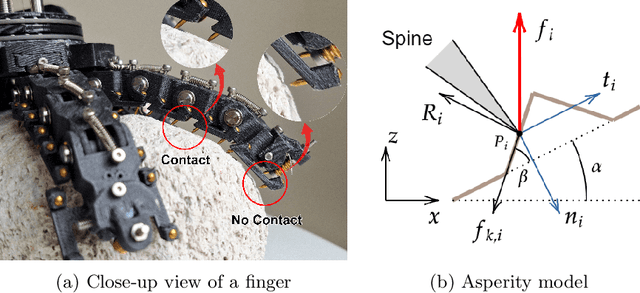
Abstract:Although wheeled robots have been predominant for planetary exploration, their geometry limits their capabilities when traveling over steep slopes, through rocky terrains, and in microgravity. Legged robots equipped with grippers are a viable alternative to overcome these obstacles. This paper proposes a gripping system that can provide legged space-explorer robots a reliable anchor on uneven rocky terrain. This gripper provides the benefits of soft gripping technology by using segmented tendon-driven fingers to adapt to the target shape, and creates a strong adhesion to rocky surfaces with the help of microspines. The gripping performances are showcased, and multiple experiments demonstrate the impact of the pulling angle, target shape, spine configuration, and actuation power on the performances. The results show that the proposed gripper can be a suitable solution for advanced space exploration, including climbing, lunar caves, or exploration of the surface of asteroids.
Sinkage Study in Granular Material for Space Exploration Legged Robot Gripper
Nov 08, 2024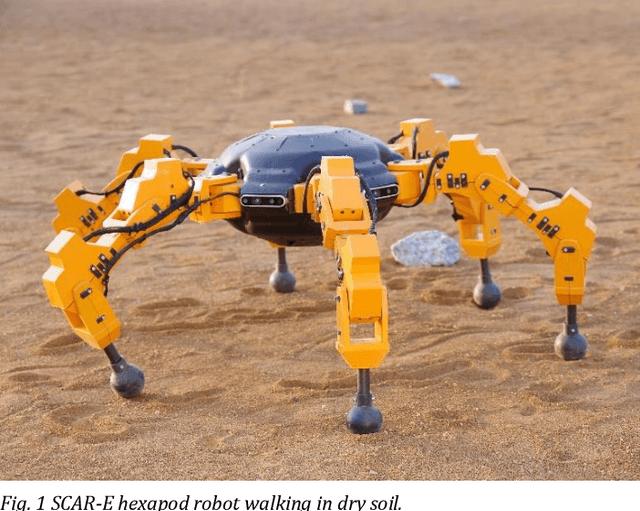
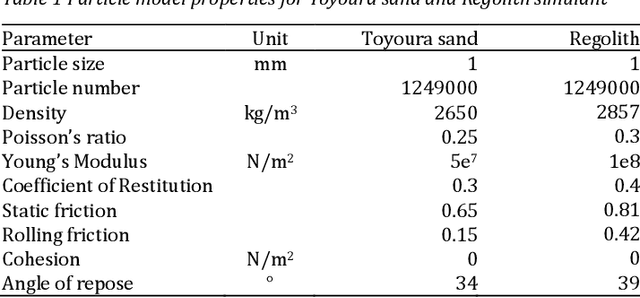


Abstract:Wheeled rovers have been the primary choice for lunar exploration due to their speed and efficiency. However, deeper areas, such as lunar caves and craters, require the mobility of legged robots. To do so, appropriate end effectors must be designed to enable climbing and walking on the granular surface of the Moon. This paper investigates the behavior of an underactuated soft gripper on deformable granular material when a legged robot is walking in soft soil. A modular test bench and a simulation model were developed to observe the gripper sinkage behavior under load. The gripper uses tendon-driven fingers to match its target shape and grasp on the target surface using multiple micro-spines. The sinkage of the gripper in silica sand was measured by comparing the axial displacement of the gripper with the nominal load of the robot mass. Multiple experiments were performed to observe the sinkage of the gripper over a range of slope angles. A simulation model accounting for the degrees of compliance of the gripper fingers was created using Altair MotionSolve software and coupled to Altair EDEM to compute the gripper interaction with particles utilizing the discrete element method. After validation of the model, complementary simulations using Lunar gravity and a regolith particle model were performed. The results show that a satisfactory gripper model with accurate freedom of motion can be created in simulation using the Altair simulation packages and expected sinkage under load in a particle-filled environment can be estimated using this model. By computing the sinkage of the end effector of legged robots, the results can be directly integrated into the motion control algorithm and improve the accuracy of mobility in a granular material environment.
Lower Gravity Demonstratable Testbed for Space Robot Experiments
Sep 19, 2023


Abstract:In developing mobile robots for exploration on the planetary surface, it is crucial to evaluate the robot's performance, demonstrating the harsh environment in which the robot will actually be deployed. Repeatable experiments in a controlled testing environment that can reproduce various terrain and gravitational conditions are essential. This paper presents the development of a minimal and space-saving indoor testbed, which can simulate steep slopes, uneven terrain, and lower gravity, employing a three-dimensional target tracking mechanism (active xy and passive z) with a counterweight.
 Add to Chrome
Add to Chrome Add to Firefox
Add to Firefox Add to Edge
Add to Edge